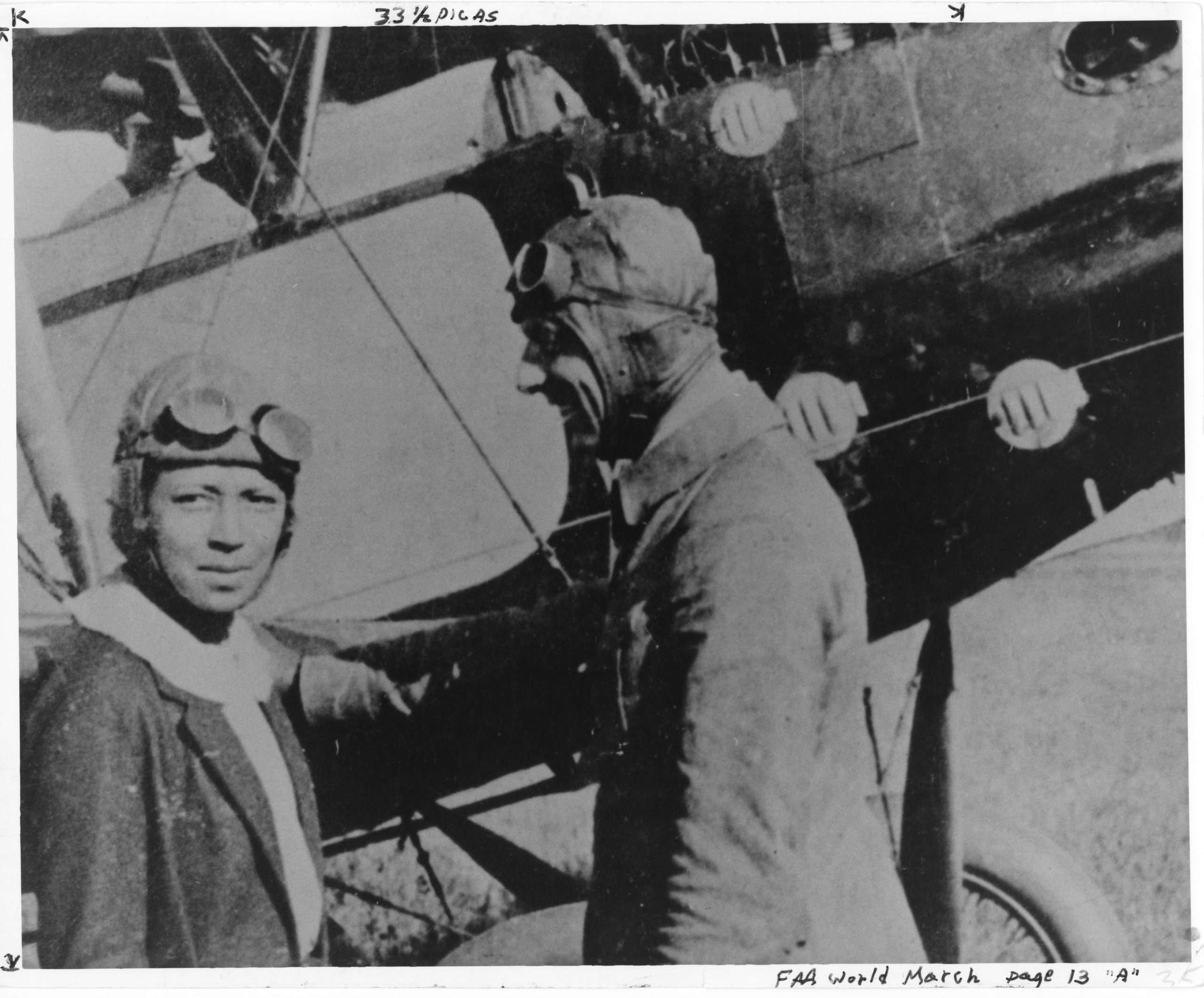Bessie Coleman with Tony Fokker
ca. 1921

Bessie Coleman was the first African American and Native American woman pilot. She was known for her daring stunt tricks in the air and performed for audiences in both the United States and Europe. Coleman was born on January 26, 1892, in Atlanta, Texas, to a large family. She grew up in Texas and briefly attended college at the Colored Agricultural and Normal University in Oklahoma before dropping out due to a lack of tuition money.
In 1915, Coleman moved to Chicago to join her brothers. They served in World War I and told her about how women in France were more commonly allowed to fly airplanes, unlike in the United States. This inspired Coleman to apply to flight schools across the United States, but she was rejected from all of them due to her being African American and a woman. Undeterred, Coleman began taking French classes and applied to flight schools in France, which were more welcoming.
Coleman was eventually accepted at the Caudron Brothers’ School of Aviation in France and formally received her international pilot’s license on June 21, 1915. To earn money for her own plane, Coleman went on speaking tours and showed films of her flights to audiences all over, with the caveat that the places she went to could not discriminate against African Americans. In 1922, she became the first African American woman to complete a public flight and audiences were thrilled with her loop-the-loop and Figure 8 tricks in her plane. She also became known for giving flight lessons and inspiring both Africans Americans and women to fly planes.
Coleman was involved in several serious plane accidents early in her career but was able to recover and fly again. On April 30, 1926, Coleman was a passenger on a flight with a mechanic, William Wills. While they were flying, a wrench got caught in the engine and Wills lost control of the plane, causing it to flip over. Coleman was not wearing a seatbelt and most planes at this time did not have a roof over the passengers, so Coleman fell out of the plane and died in the crash. Her legacy lived on through flying clubs for African American women named in her honor, and she was commemorated on a United States postage stamp in 1995.
Activities that use this document
- Analyzing a Photograph of Bessie Coleman
Created by the National Archives Education Team
Rights: Copyright Not Evaluated Learn more on our privacy and legal page.



